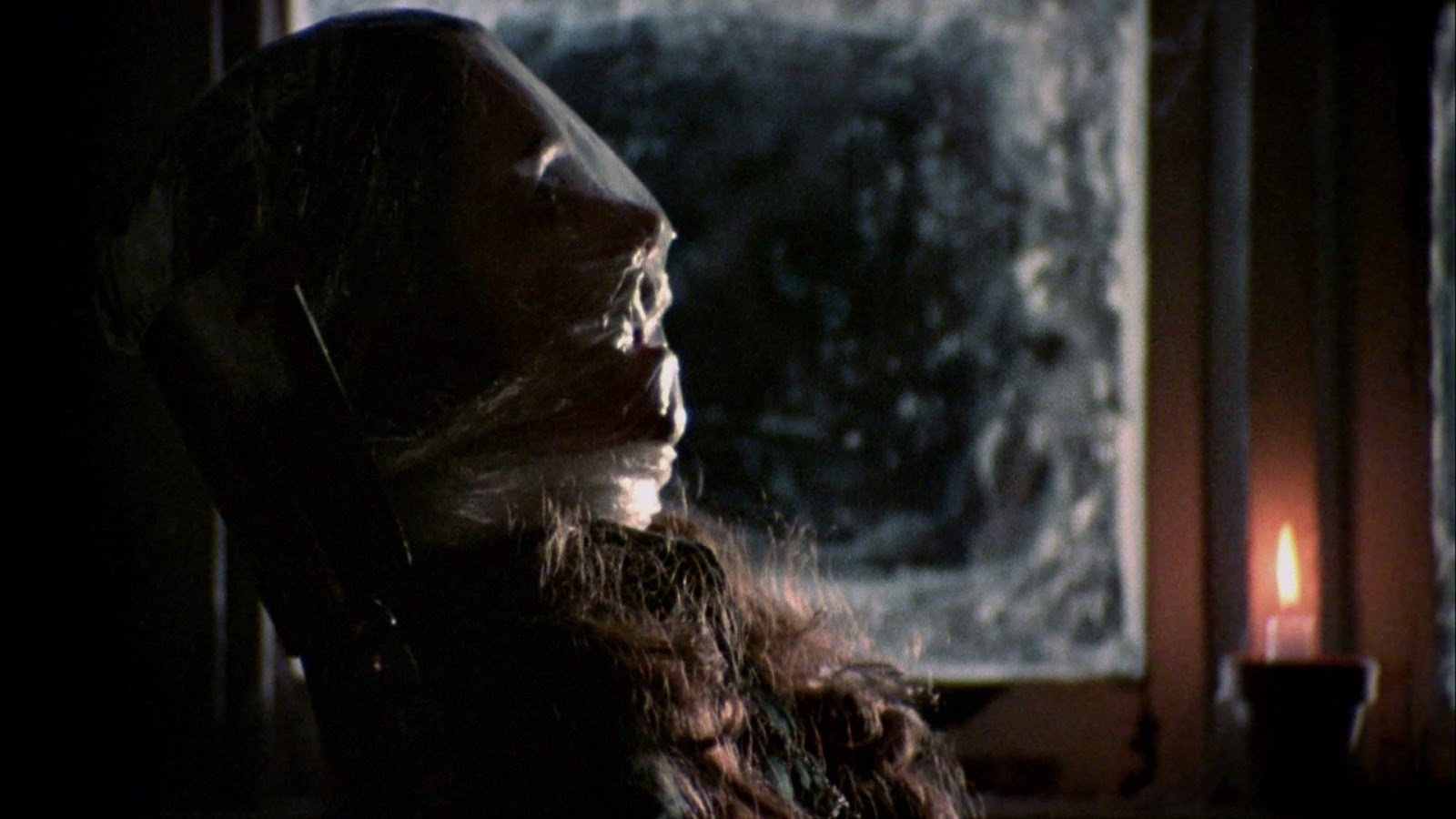[Editorial] 12 Ghouls of Christmas: Black Christmas (1974): The Bridge From Giallo To Slasher
Directed by Bob Clarke, the original Black Christmas from 1974 is a festive murder mystery film set in a sorority house over the holidays as an unknown intruder picks off the female students one by one after escalating from menacing and disturbing phonecalls.
When the horror sub-genre of the slasher is mentioned in any context, it is more often than not John Carpenter’s Halloween from 1978 that is hailed as the film which started the slasher craze in cinema. However, it was four years previous to Michael Myers that North American cinema was first introduced to a shadowy clandestine psychopath, hellbent on murder for the sake of it. The mysterious assailant known only as ‘Billy’ initially stalks the inhabitants of a sorority house through deranged telephone calls before beginning to randomly murder the young women as they and the police attempt to figure out if a sorority sister’s disappearance and a local murder of a young girl in the park are connected. At the heart of the story is Jess, a student who is grappling with her own personal problems as she finds herself in such a grim situation during what should be the happiest time of the year. Black Christmas combines a strong giallo-esque sentiment with what would yet become stereotypical tropes of a new emerging horror subgenre- the slasher.
The prototype to the slasher genre had already been sweeping across cinema in Europe with the Italian originated giallo films enthralling viewers from the late sixties until the late seventies. Gialli nearly always contained a disguised killer slaughtering beautiful victims in increasingly imaginative ways with an emphasis on blood, gore and sex. The director of Black Christmas, Bob Clarke made no secret of the film’s giallo roots, even casting John Saxon as Lieutenant Fuller. Saxon had previously starred in what is considered as the first giallo, Mario Bava’s The Girl Who Knew Too Much (1963).
Employing certain cinematography techniques widely used in the giallo tradition such as the point of view camera work when shooting the homicidal actions of Billy, contributed to the film’s voyeuristic atmosphere. The audience stealthily move around along with the antagonist, breaking and entering, with only glimpses of the killer’s hands, much like any murder scene found in giallo’s such as Mario Bava’s Blood and Black Lace (1964). Another similarity between Bob Clarke’s Black Christmas and the Italian murder mysteries is the inclusion of a detective element. Once the sorority sisters realise just how serious their predicament is, they enlist the help of local police forces to attempt to solve the mysterious disappearance of fellow housemate Clare and to try to discover the origin of the harassing phone calls. However, unlike the traditional giallo story, and perhaps the ultimate reason as to why Black Christmas is so damn terrifying is that the riddle of the identity and motive of Billy the killer is never revealed. There is not a final resolve and the ending is left completely ambiguous. In Black Christmas we are presented with perhaps the greatest horror villain of all. A man with no reason or explanation who is hell bent on terrorizing and slaying a group of women at Christmas time.
As Black Christmas unfolds, the film begins to stray further from it’s giallo roots and what materializes is the spine of what would later become the slasher movie which in turn became one of the pinnacle points in horror film history. Just like the other ancestors of the slasher genre, Alfred Hitchcock’s Psycho (1960) and Tobe Hooper’s Texas Chainsaw Massacre (1974) the central plotline revolves around females, and in particular the woman who outlives her friends and survives the killer at large, also known as ‘The Final Girl’. In Black Christmas’ case, Jess Bradford (played by Olivia Houssey) takes up the mantle of the withstanding female, and unlike the future final girl characters of the genre, Olivia is neither virginal nor abstains from indulgences and is determined not to rely on the male figures in the film.
With it’s combination of giallo flair and what would eventually become a slasher sentimentality, Bob Clarke’s Black Christmas is a highly underrated horror film that should be given as much praise and reverence as John Carpenter’s Halloween in regards to beginning the slasher craze that would eventually dominate horror cinema in the 1980s and further. With its lack of a final resolve and a downright creepy killer, it has the ability to still send shivers down the spines of audiences to this day.






![[Editorial] Soho Horror Film Festival: Interview with Aimee Kuge on Cannibal Mukbang](https://images.squarespace-cdn.com/content/v1/5fe76a518d20536a3fbd7246/1701808004722-9M8SZ2UXY52QBQBR4NTI/img20230818_15150780.JPG)
![[Editorial] 9 Horror Nintendo Switch Games To Play](https://images.squarespace-cdn.com/content/v1/5fe76a518d20536a3fbd7246/1697214470057-3XZXX8N4LYIMDFWS6Z3P/Screenshot+2023-10-13+at+17.20.13.png)
![[Mother of Fears] Mothering in Silence in A Quiet Place (2018)](https://images.squarespace-cdn.com/content/v1/5fe76a518d20536a3fbd7246/1696445921315-HZJ2DZYQIH6VVWXBO2YL/Screenshot+2023-10-04+at+19.52.29.png)
![[Event Review] Highlights from Mayhem Film Festival 2023](https://images.squarespace-cdn.com/content/v1/5fe76a518d20536a3fbd7246/1697624582491-MPT2VB9RRGU6OG7L6UKL/Mayhem+2023.jpg)
![[Editorial] Mayhem Festival: Interview with Thomas Sainsbury on Loop Track (2023)](https://images.squarespace-cdn.com/content/v1/5fe76a518d20536a3fbd7246/1697186472899-WC4RR0TW7L7LMFEBGPA2/Tom+Sainsbury.jpg)
![[Editorial] Keeping Odd Hours: A Retrospective on Near Dark (1987)](https://images.squarespace-cdn.com/content/v1/5fe76a518d20536a3fbd7246/1696445070868-HU9YIL3QPBCL1GW47R3Z/Screenshot+2023-10-04+at+19.36.53.png)
![[Editorial] 5 Female Focused Horror Book Recommendations](https://images.squarespace-cdn.com/content/v1/5fe76a518d20536a3fbd7246/1696441981361-52EQCTJ7AT2QF1927GM7/919xtm6d3fL._AC_UF894%2C1000_QL80_.jpg)
![[Editorial] What to Watch at This Year's Cine-Excess International Film Festival 2023](https://images.squarespace-cdn.com/content/v1/5fe76a518d20536a3fbd7246/1697213510960-REV43FEOZITBD2W8ZPEE/Screenshot+2023-10-13+at+17.01.15.png)
![[Editorial] Cherish Your Life: Comfort in the SAW Franchise Throughout and Beyond the COVID-19 Pandemic](https://images.squarespace-cdn.com/content/v1/5fe76a518d20536a3fbd7246/1695487675334-MYPCPYYZQZDCT548N8DI/Sc6XRxgSqnMEq54CwqjBD5.jpg)
![[Editorial] The Art of Horror in Metal](https://images.squarespace-cdn.com/content/v1/5fe76a518d20536a3fbd7246/1695486401299-E5H2JNNJT26HKN0CI7WC/Screenshot+2023-09-23+at+17.20.28.png)














![[Editorial] 10 Films & Events to Catch at Soho Horror Film Fest 2023](https://images.squarespace-cdn.com/content/v1/5fe76a518d20536a3fbd7246/1700819417135-299R7L4P0B676AD3RO1X/Screenshot+2023-11-24+at+09.41.52.png)
![[Editorial] 9 Best Slashers Released Within 10 Years of Scream (1996)](https://images.squarespace-cdn.com/content/v1/5fe76a518d20536a3fbd7246/1695478839037-LOFHGVM3H6BMSZW7G83M/Screenshot+2023-09-23+at+15.15.11.png)
![[Mother of Fears] Mother Vs. Monster in Silent Hill (2006)](https://images.squarespace-cdn.com/content/v1/5fe76a518d20536a3fbd7246/1695485781119-H6GNP0G3J2TLPAOIABV7/Screenshot+2023-09-23+at+17.11.56.png)
![[Editorial] 9 Terrifying Cerebral Visions in Horror Movies](https://images.squarespace-cdn.com/content/v1/5fe76a518d20536a3fbd7246/1693509801235-X23OL50T1DVGECH0ZJK2/MV5BMjQ0MTg2MjQ4MV5BMl5BanBnXkFtZTgwMTU3NDgxMTI%40._V1_.jpg)
![[Mother of Fears] I Don’t Wanna Be Buried in a Pet Sematary (1989) and (2019)](https://images.squarespace-cdn.com/content/v1/5fe76a518d20536a3fbd7246/1691328766069-QFNAVJOMFZVZ5CLU1RWM/Screenshot+2023-08-06+at+14.23.13.png)

Now it’s time for Soho’s main 2023 event, which is presented over two weekends: a live film festival at the Whirled Cinema in Brixton, London, and an online festival a week later. Both have very rich and varied programmes (with no overlap this year), with something for every horror fan.